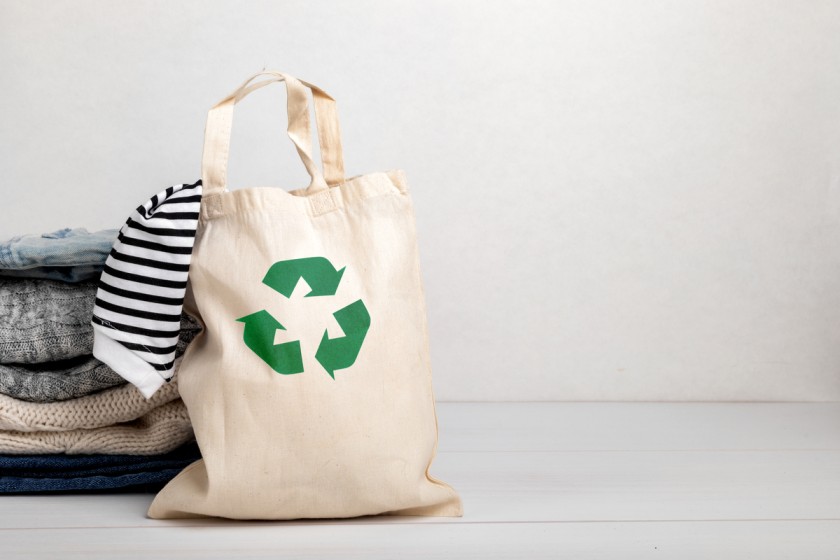Natural Fibres And The Easiest Way To Achieve Long-Term Fashion Sustainability



When planning any type of garment, the fabrics used are the building blocks that will determine the result. Hence, they are vital and hold much importance over other factors. This is a vital point to consider when sustainable fabrics are brought up in the discussion. The use of natural fabrics is crucial, now more than ever, taking into account the fact that the fashion industry has turned into one of the largest contributors to polluting the environment. The fashion industry has become a source of much of the hazardous wastes produced by the human race that is choking the planet.
This problem doesn't just stem from shopping bags but rather from the fabrics that are used to make the garments. Aside from being non-biodegradable, countless standard fabrics used in garment-making use gallons and gallons of water – during crop civilization and processing. Even the use of regular cotton is massively hazardous, as the creation of a t-shirt requires tens of gallons of water.
What are sustainable fabrics?
In common terms, viable fashion is a garment designing method to minimise the decline of resources and to avoid the additional creation of scrap and anti-environmental goods. There's a necessity to combat some of the environmental destruction fashion industry has caused in the contemporary world.
Sustainability with fashion can be attained by making and utilising clothes made from natural and sustainable fibres.
Natural fibres are grown without the use of fungicides and are recyclable, free from chemicals, and organically cultivated. We can indeed take a step further to include organic fibres produced using fair methods to mind. But, we are focusing on eco-friendly fibres similar to organic cotton, organic hemp, organic linen, and countless others.
More than simply cultivating environmentally-conscious goods, sustainable fashion expects a complete transitional change in how people perceive fashion and its consumption. As a comeback to fast fashion, charitable organisations, vendors, and customers are relocating towards slow fashion. Slow fashion supports an ethical garment manufacturing process that respects people, the terrain, and creatures.
World Resource Institute, one of the top environmental exploration charities, suggests that rather than focusing on speed and profit, companies must decelerate down, test, and invest in closed and clear business models that employ fabric reusability and maximise their usefulness life cycle. Also, governments must put pressure on sustainable fashion by imposing more regulations and restrictions.
Why would a customer choose sustainable fashion garments?

First of all, research shows that present fabric colourings can lead to cancer with exposure for prolonged time periods. It makes perfect sense, as these colorings are made by the use of chemicals similar to formaldehyde and other toxic compounds, which harm the landscape, wildlife, and humans.
The more one wears these garments, the more exposed one is to the poisonous chemicals present in the garments. Some of the most common signs of exposure can include migraines, rashes, and breathing problems.
Also, regular cotton, even though it is cheap, has been proven to pose several health hazards. Then again, it makes sense because nearly 24 percent of the world’s germicide output is used in growing this crop.
We must not deny the fact that this commercial crop occupies 2.4 percent of the world’s total fertile and crop yielding land, giving us a clear idea of the situation. Overall, the fabrics performing from conventional cotton are filled with chemicals that make their way into our bloodstreams, wreaking havoc. Unfortunately, many consumers are still oblivious to this, considering this fabric to be natural.
The increase in mindfulness of the damage caused by synthetic raw materials on the landscape has led to the development of eco-friendly materials like hemp. The experimenters have shown a lot of interest in developing similar resources which can replace synthetic raw materials. As a result, there's an increase in demand for marketable use of natural fibre-based combinations in recent times for colourful artificial sectors.
Natural threads are feasible raw materials that are easily available in nature and have advantages like low- cost, feather light, renewable, biodegradable, and highly specific qualities desirable in a fabric. The feasibility of the natural fibre-based compounds and raw materials has led to an upsurge in its operations in dye making sectors. People should advocate the major uses of natural fibres like organic cotton and their effective use as support for polymer blend raw materials.
Consequently, the only alternative is to practise fashion in a way that is environmentally friendly. Our civilization's future, the preservation of natural resources, and the protection of fundamental rights all rely on the toxic fashion business transitioning into a more sustainable and resilient industry. Fashion designers, suppliers, labels, and merchants must all play a role in enforcing the necessary adjustments. Fast, toxic fashion refers to high-reversal, low-cost, trendy apparel and accessories that are produced in order to maximise profit and meet demand. These garments are produced with hardly any consideration for the ecosystem, wastage, or labour standards. For a long time, consumers were unaware of all these practises; nevertheless, times are changing, and customers are seeking more ethical products.
The Result:
The result of this emerging awareness is the rise in the use of sustainable fabrics. Formerly, the creation of natural and organic fabrics relied on sustainable agriculture and processing techniques. Also, sustainable fabrics used up far less water than their traditional counterparts.
Eventually, the lack of chemicals will make these fabrics safe for nature and our bodies as well. Sustainable fabrics are an excellent place to begin with, if one is trying to avoid poisons in one’s wardrobe.
Likewise, in the process, the consumer will be helping growers, workers, and everyone differently in the fashion ecosystem.
Are the clothes you buy sustainable fashion or not?

Here are some checks you can do to ensure you're on the sustainable fashion track.
1. The origin
Try buying from a company that's clear about where it sources its raw materials. Maximum reputable manufacturers now run online stores that provide guests and partners with the information demanded to ensure they don't buy unsustainably sourced fabrics.
2. The fibres
Look for all-natural and biodegrade fibres similar to linen, wool, organic cotton, and hemp. Avoid plastic-grounded fibres that emit micro emissions and end up in water sources, soil, and also food. These materials are hard to break down, frequently injuring marine life and life on land as well.
Make sure you choose natural raw materials that break down and add to the terrain rather than ruining it.
3. The price
It’s frequently a sign of concern if the price is too good to be true. The garment might come from a place with lax regulations where children were exploited to manufacture goods. Also, if you find natural fabrics at a low price, there’s surely a planter or worker whose life is adversely affected.
Sustainable fashion is about guarding the land and the people working in fashion, as a whole. With every conscious choice, one can enhance life and support more stipends and working conditions for farmers and workers likewise.
People's conscious choice of sustainable fashion is the only way to stop the fashion industry from destroying the world.
Conclusion:
Thus, organic and biodegradable raw materials like linen, hemp, etc. are the way to a nontoxic and safe future protecting the earth from the poisonous fashion industry. We should try to reuse clothes that have microplastic in them and use cold water to wash such clothes to avoid contamination of water bodies that can cause adverse effects on marine life. We must do our share in trying to reduce the pollution generated by fast fashion that we have encouraged, which is harmful not just to the environment but also to human health. Fashinza plays a major role in the industry to help the term ‘sustainable fashion’ achieve its true sense. They provide clothes made of natural fibres, which make the planet a better place.



















